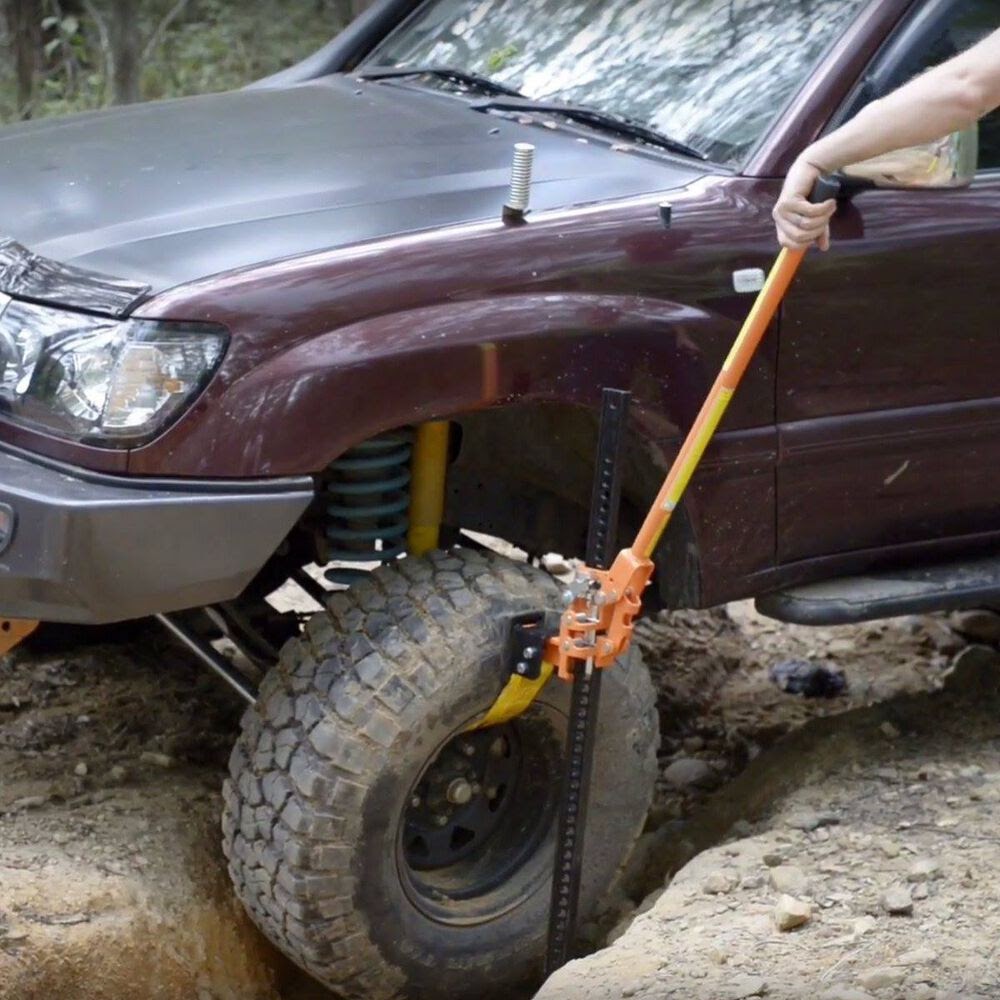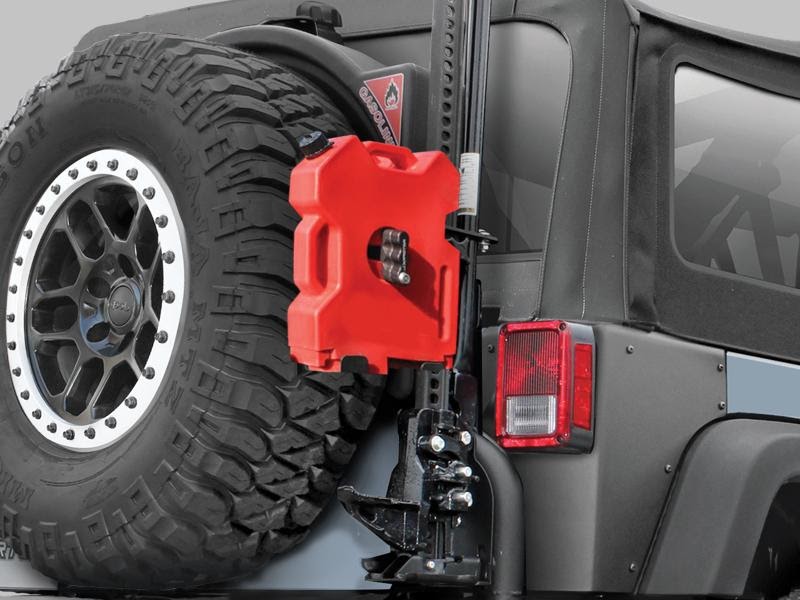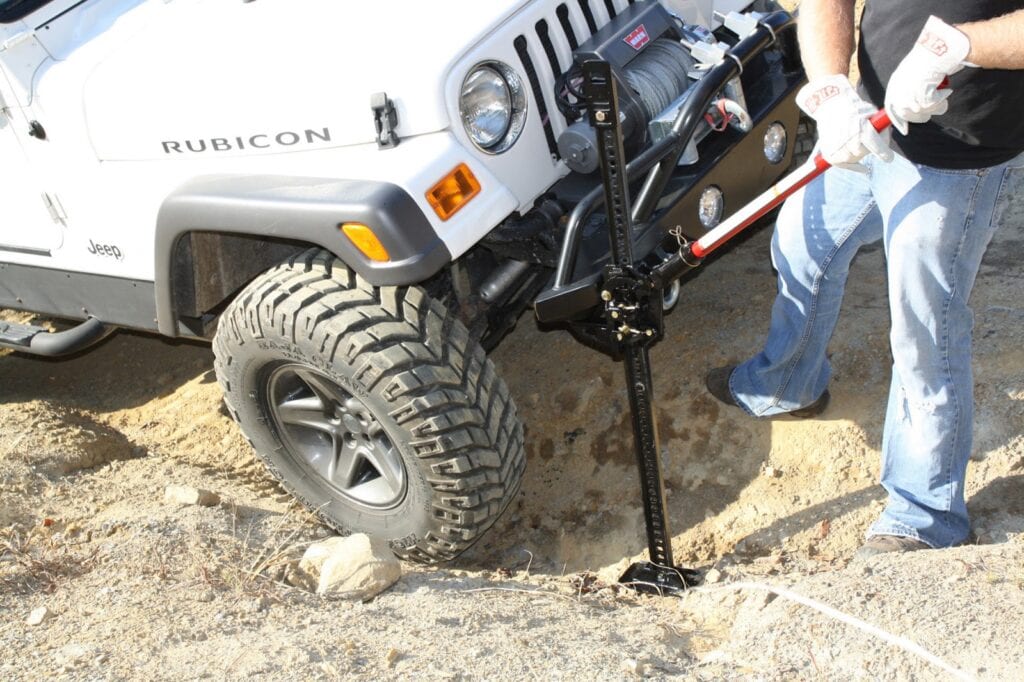Travelling the Australian outback with your 4×4 is certainly an exciting experience. You get to look at all the different scenery and landscapes that Australia has to offer and tackle roads that can’t be reached by any other vehicle or even on foot. However, as tough and durable as your 4×4 is, there’s always a chance of getting stuck in the middle of nowhere, whether it’s in mud, quicksand, a creek or any other obstacle you come across on your trip. For that reason, having some sort of recovery equipment is essential.
Benefits of 4WD High-Lift Jacks
You’ve probably heard about recovery tracks and winches, both of which offer a way to get you out of a sticky situation. What many people aren’t aware of, is that 4×4 jacks are the preferred recovery choice for many experienced off-roaders. Hi-lift jacks are 4×4 accessories that are tough, versatile, affordable and provide a simple way to recover your vehicle from virtually any scenario, on top of other things. For instance, they can spread bent cage tubes or clamp together broken components. However, they can also be dangerous if they aren’t used properly, leading to broken teeth, smashed fingers and potential concussions. But as long as you respect the tool, it’s heavy-duty use and learn how to use it, there’s no reason to be afraid.
Intimidated by 4×4 jacks yet? Great, it means I got your undivided attention. When used properly, the high-lift jack is an irreplaceable piece of gear for any off-road enthusiast going through any terrain. These tools lift the chassis of your 4×4 up, which can be beneficial when you’re bellied out on a tree stump or rock. You can also lift the tyres off of the ground should you need to replace a flat one. This can also come in handy if you need to fill a hole under the tyre or place sand ladders.
High-lift jacks feature two climbing pins that alternate up its series of holes. One of the pins holds the load, while the other is moved to the hole below if you want to lower your rig or the hole above when you raise your rig. The most standard size of high-lift jacks is 48 inches, but there are also 60-inch models for higher 4x4s. The 4×4 is lifted by the weight of the operator and the leverage of the handle. If you overload the high-lift jack, a shear pin will give way before any other important part of the high-lift jack breaks, freezing the jack in place instead of dropping to the ground.

Using a 4WD Jack Safely
Before you use your high-lift jack, think about what you’re trying to accomplish with it. Are you trying to lift the entire belly or just a corner of your 4×4. Is the ground under your 4×4 even or uneven? Where will you place the jack? Thinking about these things in advance will help you do the job safely. Stabilise your 4×4 and set the parking brake before you attempt to recover it. In order to lift your 4×4, the high-lift jack needs to have its lever in the up position and start with its handle parallel with the bar. You can then start running the foot up the bar so that you begin jacking without having to cycle the mechanism. This is only possible if the jack isn’t under load and the lever is placed in the up position.
Once the high-lift jack is positioned, grasp the top of the bar using your fingers and squeeze only the three sides that are away from the bar. Don’t wrap your thumb around the bar. This can prove to be difficult as you lift the vehicle higher in the air, and the amount of effort you’ll need to put in increases. If the high-lift jack seems unstable or tilts, don’t use excessive force. Instead, lower it and reposition it for a more stable lift. This gets easier the more you use the high-lift jack.
And in order to lower the vehicle, you need to hold the high-lift jack’s bar and handle using one hand. Then you need to hit the reverse lever into the down position using your foot. Do an elbow lock on the bar using one hand and grab the handle with your other hand to lower it. After the climbing pin clicks, raise the handle. As the handle raises, the force will increase and the handle will pull your arm up the bar. As the handle rises, the leverage will increase, so be conscious of your footing and keep your body away from the handle.
Consider Your Options
It’s easy to find a store selling online 4WD accessories that offers a variety of aftermarket 4×4 jacks that can be more useful and safer when you’re out travelling with your 4×4. This includes numerous attachments to the foot of the jack that help secure the round tubing, mate to your aftermarket bumpers or hook on a wheel. Some accessories are designed to go under the small base that comes with the jack. By increasing the surface area under the jack, you make it more stable and more unlikely to sink into the terrain. Some high-lift jacks feature isolators to prevent rattling and covers to protect the high-lift jack from the elements when not in use. This is important to keeping the climbing pins on the jack from gouging into the bar and prevent the jack from sticking.

Think About Storage
Storing your high-lift jack is also something you need to think about beforehand. These are pieces of essential off road recovery gear that can be quite heavy and long, so it’s not something you just toss in the back seat. The most common mounting options for your high-lift jack are spare tyre mounts and tube clamps.
Some online 4WD accessories manufacturers also make specialised mounts for vehicles, allowing you to mount the high-lift jack at the door hinges or on the roof rack. If you don’t already have one, mounting a jack is just one of the reasons to get a roof rack. Overall, the best high-lift jack mounts are those that hold it securely and protect it from the elements, while allowing for easy and convenient access.






